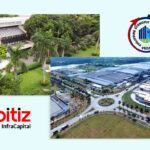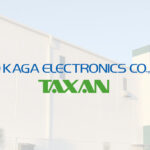ASIA ELECTRONICS INDUSTRYYOUR WINDOW TO SMART MANUFACTURING
UL Solutions Opens New Lab in Japan for Battery Safety
UL Solutions, a global leader in applied safety science, has opened a new battery enclosure material screening (BEMS) laboratory in Ise, Mie, Japan. This move aims to help automotive manufacturers and their suppliers safely compare the performance of various materials. Accordingly, this will enhance electric vehicle (EV) battery safety.

Bring Safer Batteries to Market
Battery enclosures help protect EV occupants. Moreso, the materials the enclosures are made of play a critical safety role in case of a battery fire. This is also known as a thermal runaway event.
The UL Solutions Ise BEMS Laboratory will be the company’s second facility with BEMS testing capabilities. It follows the company’s headquarters in Northbrook, Illinois. Particularly, this new lab is anticipated to help regional customers accelerate battery enclosure research and development. Subsequently, it aims to bring safer batteries to market.
“Manufacturers in the automotive industry are investing in researching and developing lighter batteries to extend electric vehicle range and stay competitive while keeping occupant safety at the forefront,” said Hidehiko Yamajo, regional vice president of Japan at UL Solutions.
“We believe our new laboratory in Japan is well-positioned to meet the needs of global manufacturers. It will help them navigate complex challenges and shape the future of mobility.”
Typically, EV batteries cover the entire base of a vehicle. Primarily, materials that house these batteries must be tested to determine their ability to withstand thermal runaway stresses. Thermal runaway is a chain reaction that can occur in lithium-ion batteries when the internal temperature of a battery cell reaches critical level. It can produce fire, smoke and extremely high temperatures.
UL Solutions BEMS offerings evaluate the performance of battery enclosure materials in a thermal runaway event. They are outlined under UL 2596, the Standard for Test Method for Thermal and Mechanical Performance of Battery Enclosure Materials.
The new UL Solutions BEMS laboratory is expected to help the automotive industry protect EV occupants with capabilities to conduct UL Solutions Battery Enclosure Thermal Runaway (BETR) evaluations and employ the UL Solutions Torch and Grit (TaG) test method.
BETR evaluates material performance by simulating a thermal runaway scenario. The evaluations entail testing material plaques versus the entire battery assembly using lithium-ion battery cells (18650 type). Also, they involve reducing testing costs and development time for resin manufacturers and material suppliers.
TaG incorporates small-scale testing and simulates high temperatures and mechanical impact stresses in a battery thermal runaway event. Also, it ranks materials for battery enclosures.
The opening of this new testing facility is part of the company’s expansion of mobility and new energy technology facilities in Japan. The Ise Campus is home to laboratories for safety, EMC, reliability testing, and large mobility as well as the CHAdeMO EV-Quick Charger Matching Center.
-30 May 2024-




